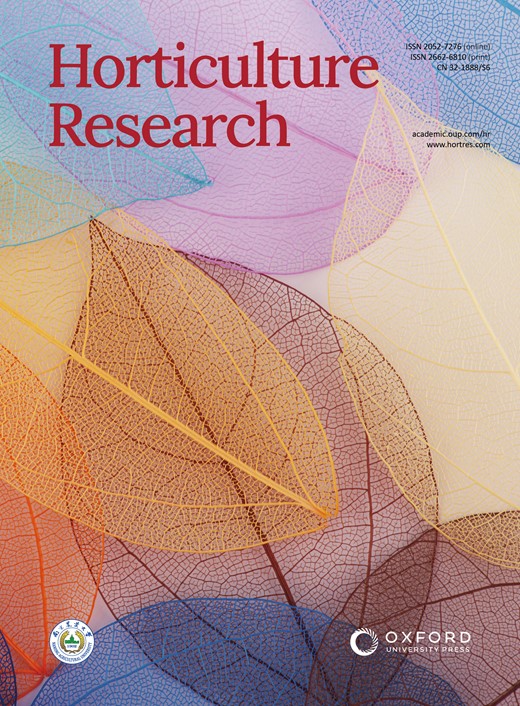H2S promotes flowering in Brassica rapa ssp. pekinensis by persulfidation of the splicing factor BraATO2
IF 8.7
1区 农林科学
Q1 Agricultural and Biological Sciences
引用次数: 0
Abstract
Hydrogen sulfide (H2S) is a newly identified gasotransmitter that plays an irreplaceable physiological role in plant growth, development, and environmental responses through persulfidation of cysteine (Cys) residues (RSSH). However, reports on the direct RSSH targets of H2S in plants remain limited. The flowering regulation mechanisms of Brassica rapa ssp. pekinensis are a significant scientific issue in the crop production industry, however they remain poorly understood. BraATO2 is an important splicing factor in genetic alternative splicing (AS). Our study demonstrated that H2S regulated BraATO2 function by persulfidating the Cys residue at position 416. In turn, this influenced the AS patterns of multiple genes in B. rapa, specifically the flowering regulator BraAGL31/MAF2 within the FLOWERING LOCUS C-like (FLC-like) gene family, causing accelerated flowering. This study identified a new direct target of H2S and uncovered a novel pathway influencing flowering in B. rapa. Furthermore, the study findings provide fresh insights into the development of innovative flowering regulators for plants.H2S促进油菜开花。剪接因子BraATO2的过硫化作用
硫化氢(H2S)是一种新发现的气体递质,通过半胱氨酸(Cys)残基(RSSH)的过硫化,在植物的生长、发育和环境响应中起着不可替代的生理作用。然而,关于H2S在植物中的直接RSSH靶点的报道仍然有限。芥蓝开花调控机制的研究。在作物生产行业中,北京猿猴是一个重要的科学问题,但人们对它们的了解仍然很少。BraATO2是遗传选择性剪接(genetic alternative splicing, AS)中的一个重要剪接因子。我们的研究表明H2S通过过硫化416位的Cys残基来调节BraATO2的功能。反过来,这影响了油菜中多个基因的AS模式,特别是开花位点C-like (FLC-like)基因家族中的开花调节因子BraAGL31/MAF2,导致开花加速。本研究发现了一个新的H2S直接靶点,并揭示了一条影响油菜开花的新途径。此外,该研究结果为植物开花调节剂的开发提供了新的见解。
本文章由计算机程序翻译,如有差异,请以英文原文为准。
求助全文
约1分钟内获得全文
求助全文
来源期刊

Horticulture Research
Biochemistry, Genetics and Molecular Biology-Biochemistry
CiteScore
11.20
自引率
6.90%
发文量
367
审稿时长
20 weeks
期刊介绍:
Horticulture Research, an open access journal affiliated with Nanjing Agricultural University, has achieved the prestigious ranking of number one in the Horticulture category of the Journal Citation Reports ™ from Clarivate, 2022. As a leading publication in the field, the journal is dedicated to disseminating original research articles, comprehensive reviews, insightful perspectives, thought-provoking comments, and valuable correspondence articles and letters to the editor. Its scope encompasses all vital aspects of horticultural plants and disciplines, such as biotechnology, breeding, cellular and molecular biology, evolution, genetics, inter-species interactions, physiology, and the origination and domestication of crops.
 求助内容:
求助内容: 应助结果提醒方式:
应助结果提醒方式:


